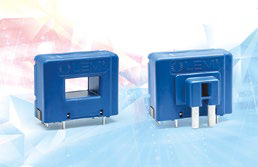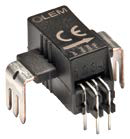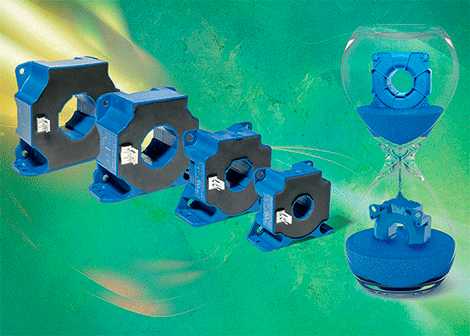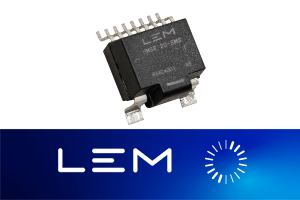LEM completes its range of versions with digital output of the HO and HLSR open-loop Hall-effect current transducers with A/D conversion using a built-in sigma-delta modulator, thus providing a 1-bit serial bit stream at the output . These new components are indicated to measure current ratings of 16, 32, 40, 50, 80, 100, 120, 150, 200, 250 ARMS in 4 different mechanical designs (PCB and panel mount) and offer a resolution of up to 12 bit with a bandwidth of 20kHz. They also provide various types of digital outputs including 2-wire CMOS with a single output bit (with or without clock), RS422 Manchester or LVDS Manchester, which minimizes the connections required, or 4-wire based on LVDS or RS 422 standards. (with or without clock). The digital output allows the user to choose the filter used in the bit stream to optimize the combination between resolution and response time, depending on the application. Digital outputs are also inherently immune to noise in harsh environments.
In a typical transfer function, the average bit stream density is 50% for zero current in the primary and 10% or 90% for maximum currents in the negative or positive directions. In HLSR-PW models, in one mode of operation the clock is obtained from the sensor at 10MHz and both the clock and data are single ended signals with CMOS levels. Alternatively, the output can be Manchester encoded on 2 pins, thus meeting the RS422 standard. The size of these sensors is the same as the analog HLSR. The HO-NPW, HO-PW and HO-SW models can have single ended and Manchester modes like the HLSR-PW models, but add another 2 pins so that clock and data can be differential signals compliant with RS422 standards. and LVDS.
Additionally, the transducer clock can be configured as an input in the range of 5 – 12,5MHz to use a single clock across the system. The new transducers can use a 5V power supply and the operating temperature range is -40°C to +105°C. Different filters can be used on a given bit stream. An example for a “current control loop” function: if a sinc3 filter is used with an oversampling ratio (OSR) of 512, the effective resolution of a 150A sensor is 12 bit and the width of the band is 5kHz. Alternatively, for an “out of range detection” function, a sinc2 filter with an OSR of 16 would give a 5,2µs response time from the same bit stream but the resolution would be reduced to 6 bit. The HO family transducers also incorporate an Over-Current Detect (OCD) function that measures the current level before the A/D converter. The response time of the OCD is 2μs.








